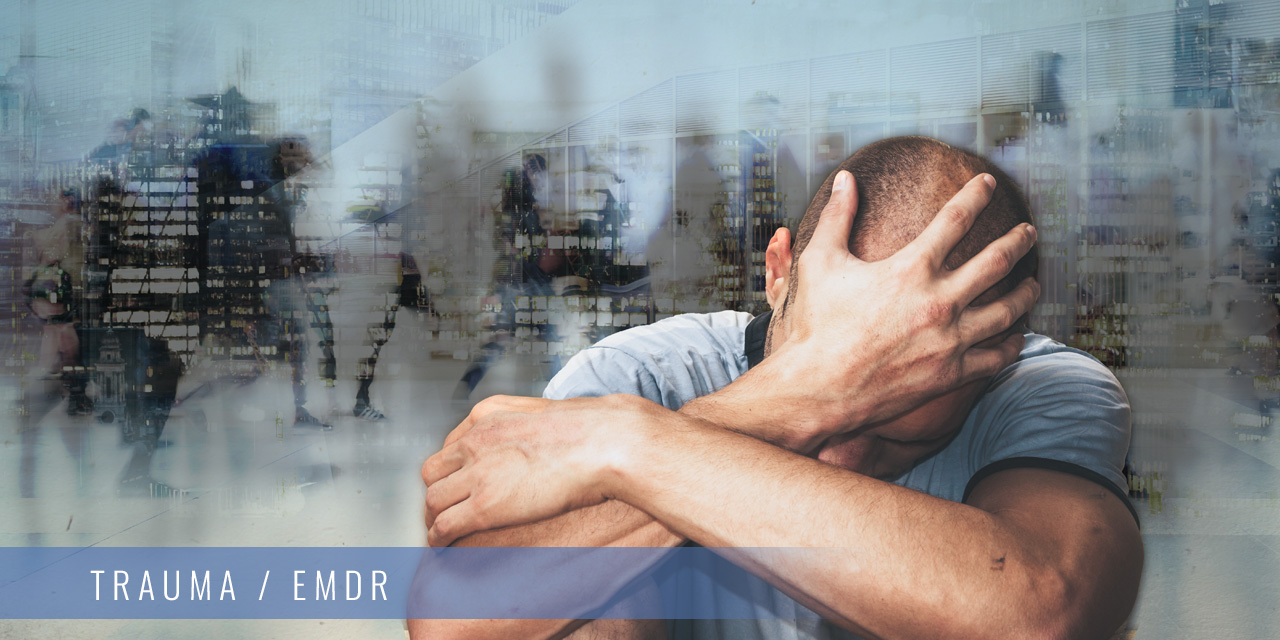
TRAUMA/EMDR THERAPY
“One long-term impact of trauma is the fact that often-traumatized individuals have difficulty recognizing how they are feeling and then fail to respond in an appropriate and helpful way. They become out of touch with their own feelings, bodies, and needs, which in turn makes it more difficult to respond to the feelings, sensations, and needs of others in their lives.”
― Patrick J. Carnes
Have you experienced a traumatic event in your life that continues to impact your daily life? Do you struggle with nightmares, flashbacks, panic attacks, depression, anxiety, negative self-esteem, addictions or other self-defeating behaviors? Do you find yourself surrounded by triggers that make it difficult to function normally or stay sober?
“Big T” versus “little T” trauma.
There are two basic categories of trauma, “Big T” and “little t” trauma. The difference between the two reminds me of a childhood chant “Sticks and stones may break my bones but words will never hurt me.” “Big T” trauma is what most people associate with trauma such as a single-incident traumatic event that felt like, or was, a genuine threat to life that resembles the “sticks and stones” in the chant. However, don’t underestimate the impact of “little T” trauma. I find that broken bones tend to heal far faster than broken confidence and self-worth. In fact, the version below is a more accurate description of the impact of trauma in the form of traumatic memories, negative self-concept, and insecurities as they present in my office.
“Sticks and stones may break my bones, but words can also hurt me. Stones and sticks break only skin, while words are ghosts that haunt me.”
Trauma and the Body
When common events from daily life trigger trauma, our body responds as if the threat is still present. This produces a physiological response, typically in the form of fight, flight, or freeze, to manage the threat. When this occurs, our body moves into a hypervigilant, reactionary state, and our logical brain goes offline. Our logical brain and our body can become disconnected, and we go on auto-piolot, to self protect. Frequent symptoms that accompany these states are hyperarousal (fight or flight), hypoarousal (freeze), or dissociation. When these distressing events occur, some reach for substances, or engage in behaviors to distract or distance from the disturbing event.
Trauma and Relationships
In addition to disconnecting from the self, trauma can cause disconnection from others. The neuroscience supporting the basic human need for secure attachments has been well established. Therefore, when our attachments to others are threatened through abandonment, loss, or betrayal, the pain, fear, and anxiety can be excruciating.
“Emotional connection is crucial to healing. In fact, trauma experts overwhelmingly agree that the best predictor of the impact of any trauma is not the severity of the event, but whether we can seek and take comfort from others.” Sue Johnson, Hold Me Tight
Early childhood emotional wounding through abuse, neglect, bullying or external events may result in a damaged sense of self, safety, or control frequently referred to as “little t” traumas. These children grow up into adults who struggle with their sense of self-worth, safety, or ability to trust others. Sometimes the disconnection occurs at such a young age that they don’t remember ever feeling safely or securely connected to others. In this situation, some people may find it easier to turn to behaviors or substances to meet these unfulfilled attachment longings, laying fertile ground for the development of addiction.
Trauma Treatment
At Untethered Therapy, we get to the core of the trauma utilizing several different treatment modalities to manage trauma symptoms as well as target the physiological and psychological responses that keep us stuck. Our trauma specialists utilize EMDR (Eye Movement Desensitization Reprocessing), a highly effective and efficient, evidence-based therapy that stimulates the brain’s natural ability to move towards health. EMDR is one of the most powerful modalities to treat everything from severe childhood trauma, combat trauma, addictions, and self-defeating beliefs/patterns. EMDR expedites healing, getting you “unstuck” from past behaviors and experiences and setting yourself free to become your best self!
What is EMDR?
EMDR (Eye Movement Desensitization and Reprocessing) is a psychotherapy that enables people to heal from the symptoms and emotional distress that are the result of disturbing life experiences. EMDR therapy offers benefits for emotional trauma and PTSD that typically take years to achieve in psychotherapy alone. A 2014 review of the existing research showed that in some studies, 84% to 90% of people who have experienced a single trauma found relief from PTSD symptoms after just three EMDR sessions that lasted 90 minutes each. In a study by Kaiser Permanente, people who had experienced a single trauma or multiple traumas underwent six 50-minute EMDR therapy sessions. In a follow-up study, 100% of the single-trauma patients and 77% of multiple-trauma patients no longer had PTSD.
EMDR therapy is recognized as an effective form of treatment for trauma and other disturbing experiences by organizations such as the American Psychiatric Association, the World Health Organization and the Department of Defense. EMDR has also proven effective in treating negative core beliefs that contribute to low self-esteem, feelings of powerlessness, and many other struggles that cause people to seek therapy.
For more information about EMDR and how it can help you heal, visit:
https://www.amenclinics.com/services/emdr/



